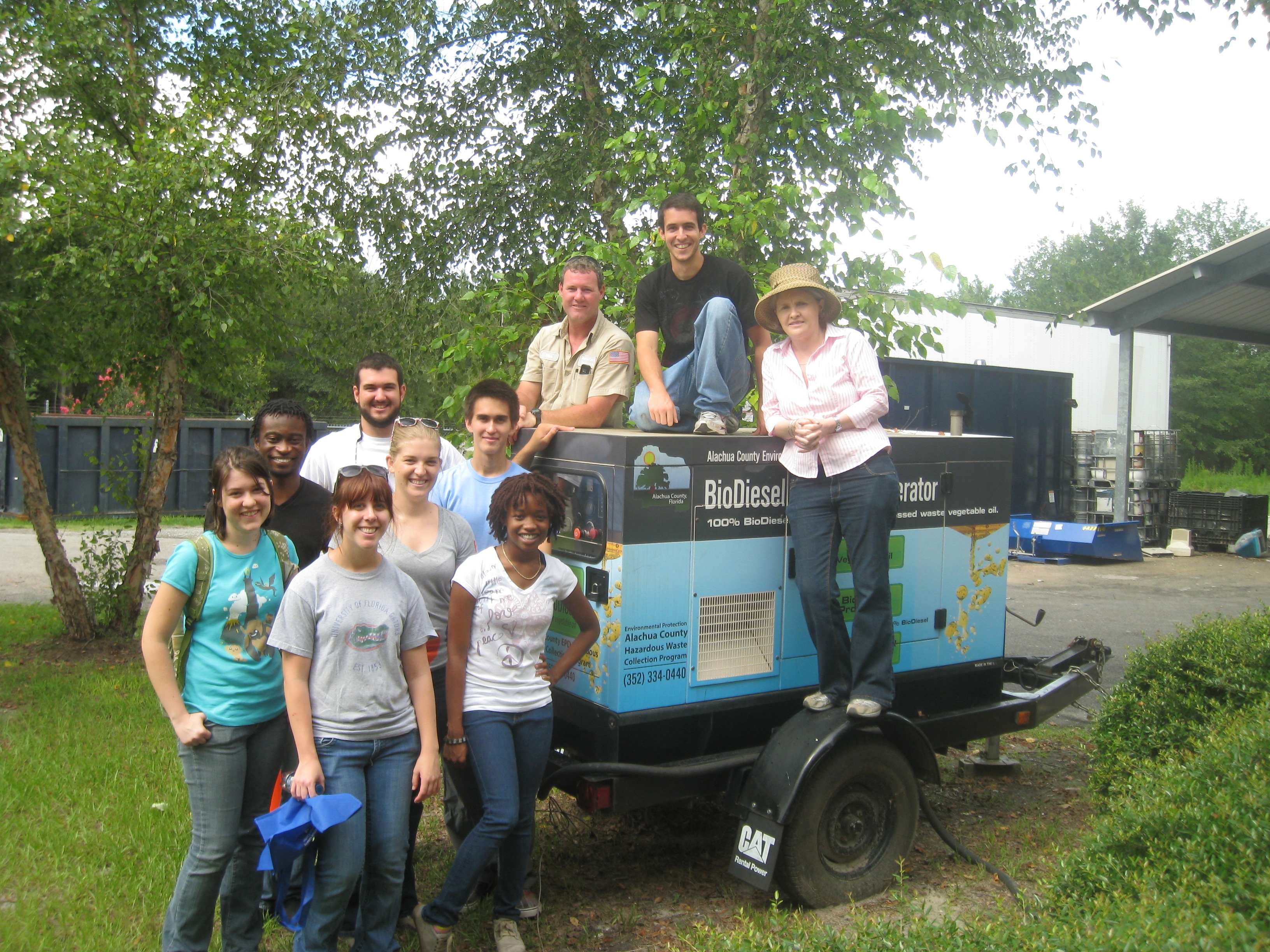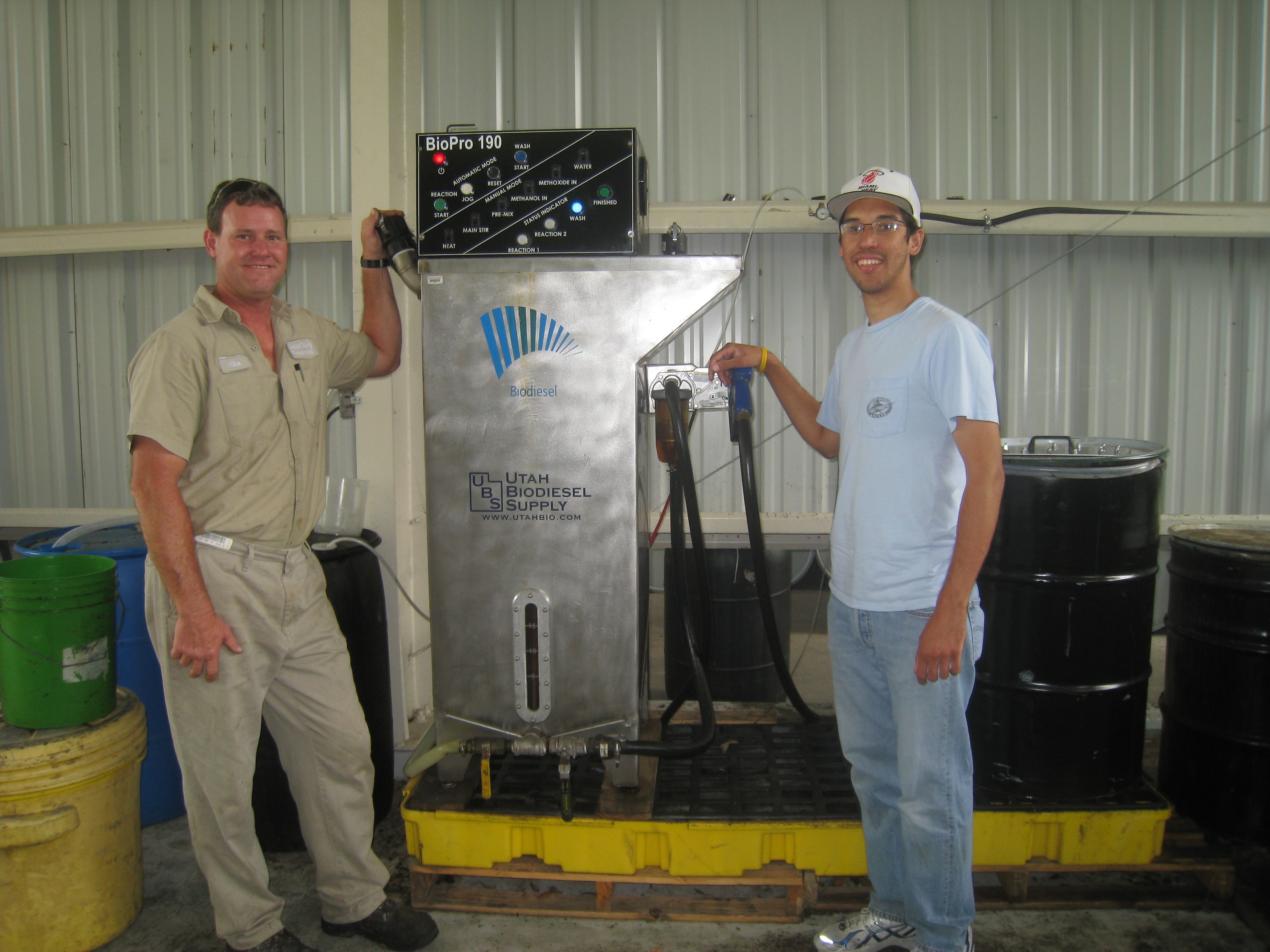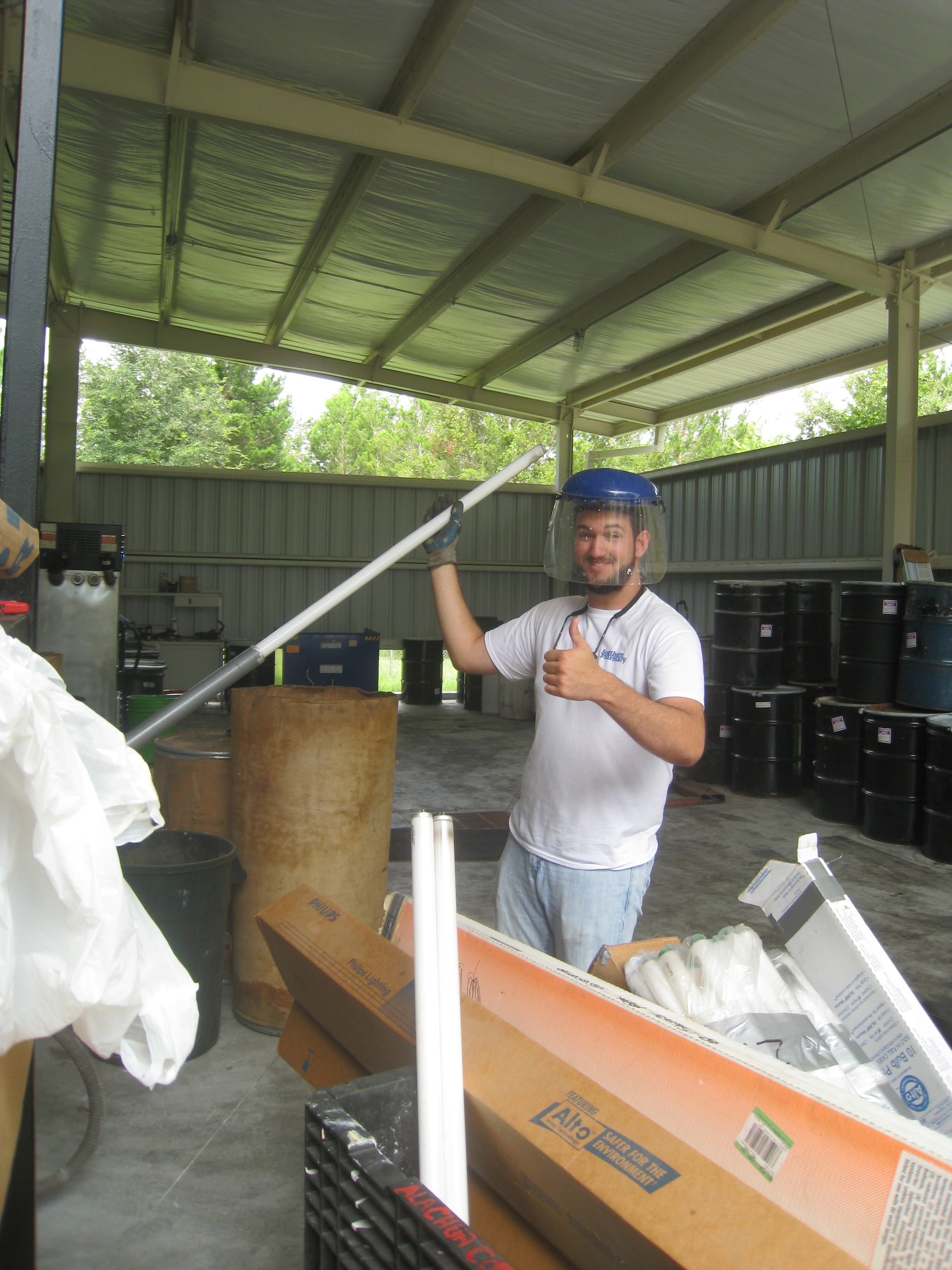Alachua County Hazardous Waste Collection Center
July 11, 2012
Gainesville, FL
Author: Brent Lavato
Website

On July 11th we took a field trip to the Alachua County Hazardous Waste Collection Center. The facility is responsible for the collection of various hazardous materials brought in, but the main goal of our visit was to see biodiesel production in a practical setting. Using waste cooking oil collected at the center, and a 3 stage, commercially available biodiesel production unit, the center provides enough energy to run its own operations and donate 5000 gallons of biodiesel/month to the transfer station next door. In addition to the waste cooking oil, the facility takes in huge amounts of materials that range from old gasoline cans with poor gasoline to pesticides and other hazardous chemicals. Over the last 13 years the facility has been in operation there has been 380,000 gallons of latex paint given to the community, 325,000 pounds of chemicals disposed of, and 790,000 pounds of flammables have been used for energy recovery. Our field trip covered many specifics of dealing with materials collected and showed us the practicality of biodiesel on the local scale.
We started off the tour in the main building and walked out to the adjacently located biodiesel unit after a brief history on the facility. The biodiesel shelter was newly redone, and had a workstation off to a corner, and had rows of used vegetable oil containers as well as finished product. Mike Keim, the environmental scientist who makes the biodiesel for the center, explained the process and history of biodiesel production at the site. The center received the biodiesel reactor from a grant provided by the state. It was difficult to find space for a biodiesel unit, especially when methanol, a highly flammable chemical is required in the process. After changing sites a few times, and sorting out an electricity problem, the biodiesel unit was operable and began to make 50-gallon batches of the fuel.

The production of biodiesel is a relatively simple trans-esterification process in terms of chemistry. The 3-stage process begins with filtering the used oil. Because of the unknown particles in the vegetable oil, it goes through three physical filters to remove any chunks of old food or any other materials that may have found its way to the oil. Water and various cleaners settle out and also have to be dealt with. Mike then uses a Free Fatty Acid field test and an ensuing titration to find the amount of Potassium Hydroxide base needed to put into the process. The oil is heated and the KOH and methanol are added. As the reaction proceeds, glycerol is made as a byproduct and sinks to the bottom of the reaction vessel where a valve is in place to drain it off. From there, the biodiesel is heated to boil off the water and after a period of settling it is stored for usage. There is a pump in place directly from the reaction vessel that pumps the finished product just like you would at a gas station. In addition to the glycerol as a byproduct, there is also a very basic water solution referred to as wash water. Though it’s actually very alkaline in pH, their current disposal method is to wash it into the wastewater stream, they are allowed up to 50 gallons a week. During the tour we had a brief discussion about possible alternative usages of the wastewater and the glycerol, which are currently being dumped and contracted out for disposal respectively. The ironic point was made that by beginning to produce biodiesel on site, the facility actually became a small quantity producer of hazardous waste.
After the biodiesel section, we traveled to the light bulb disposal section. Containing levels of phosphorus and mercury, light bulbs are a hazardous material that are frequently overlooked and thrown into the general landfill. At the center, a machine known as the bulb buster is used to crush the bulbs. An activated charcoal filter separates the mercury from the crushed glass and is bagged separately when given back to manufacturing company.

From the glass unit we were led to the main floor of the center. In this main area, we were shown the various holding areas for many products. When the facility received pressurized aerosol cans, the canister goes into a unique machine, which breaches it and releases liquid into a canister and gasses into the air. Steel from cans are crushed and recycled. The center also houses a used oil recycling unit that collects used motor oils to be recycled as store brand products. Propane from tanks at the facility is released or transferred from the tanks if possible and the tanks are refilled and resold. Biohazards from medical facilities are collected in red boxes and contracted out for disposal. At the far end of the main floor were three bays that were used for household poisons, oxidizers, and chemicals that couldn’t be mixed such as pesticides. Every container and item collected here is an item that could have been improperly disposed of in the landfill.
The operation of this facility is integral to improving sustainability, and as more effective methods to dispose of hazard materials arise, hazardous collection facilities will only increase in usefulness. The biodiesel unit serves as an excellent example of how a community can utilize a readily available biofuel and recapture energy from something perceived as a waste. Hopefully as biofuel education progresses in our society, more resources for producing sustainable and cleaner energy sources will become available and offset our current carbon footprint. Through initiatives like this one, Alachua County has made strides toward becoming green, and can be used as a model of how to transition from fossil fuels to alternative energy for others around the state.